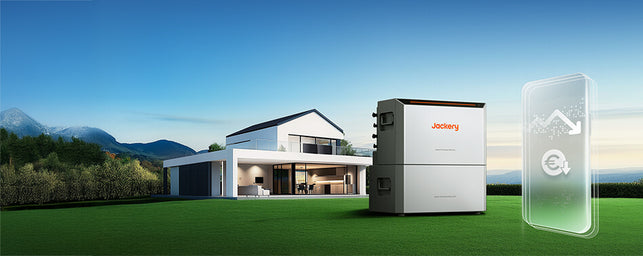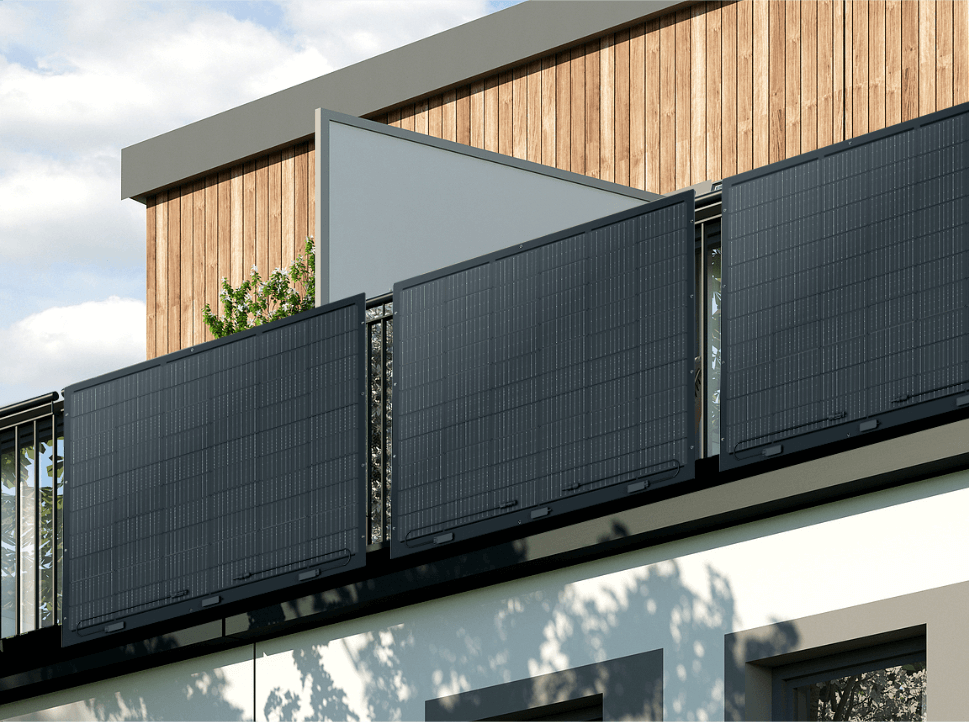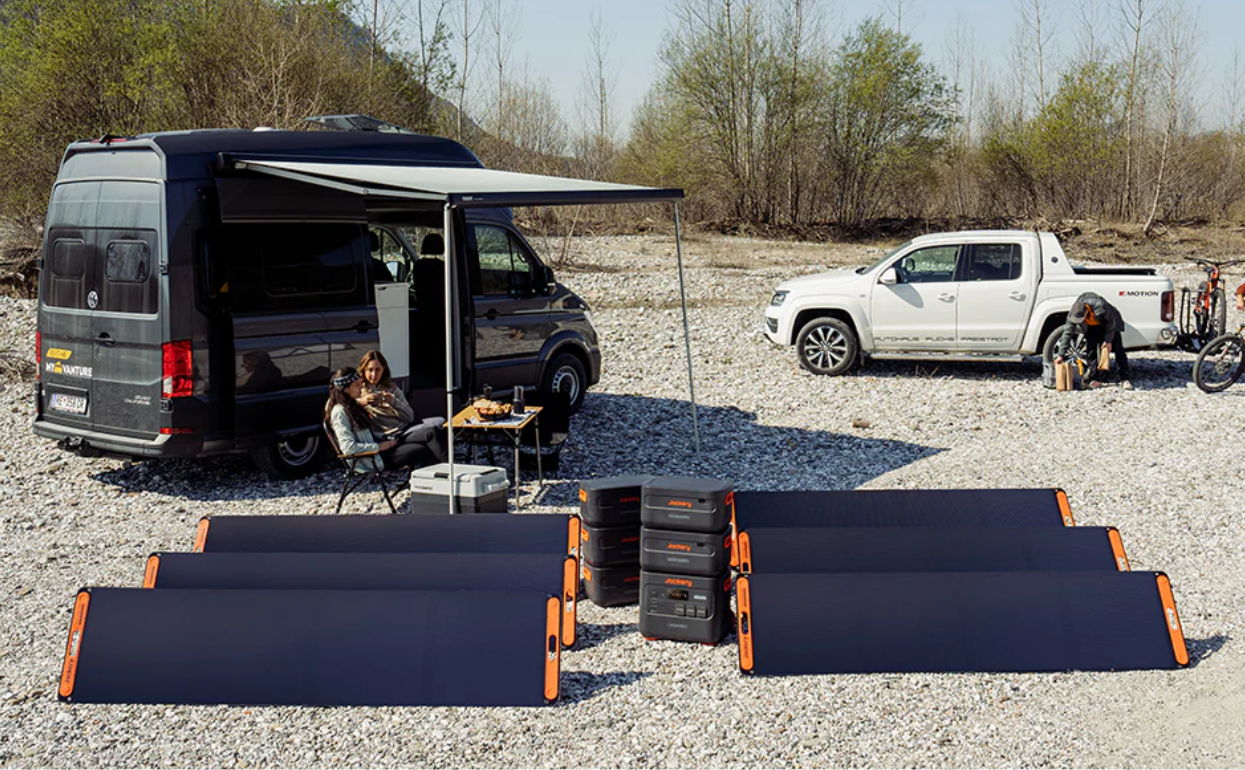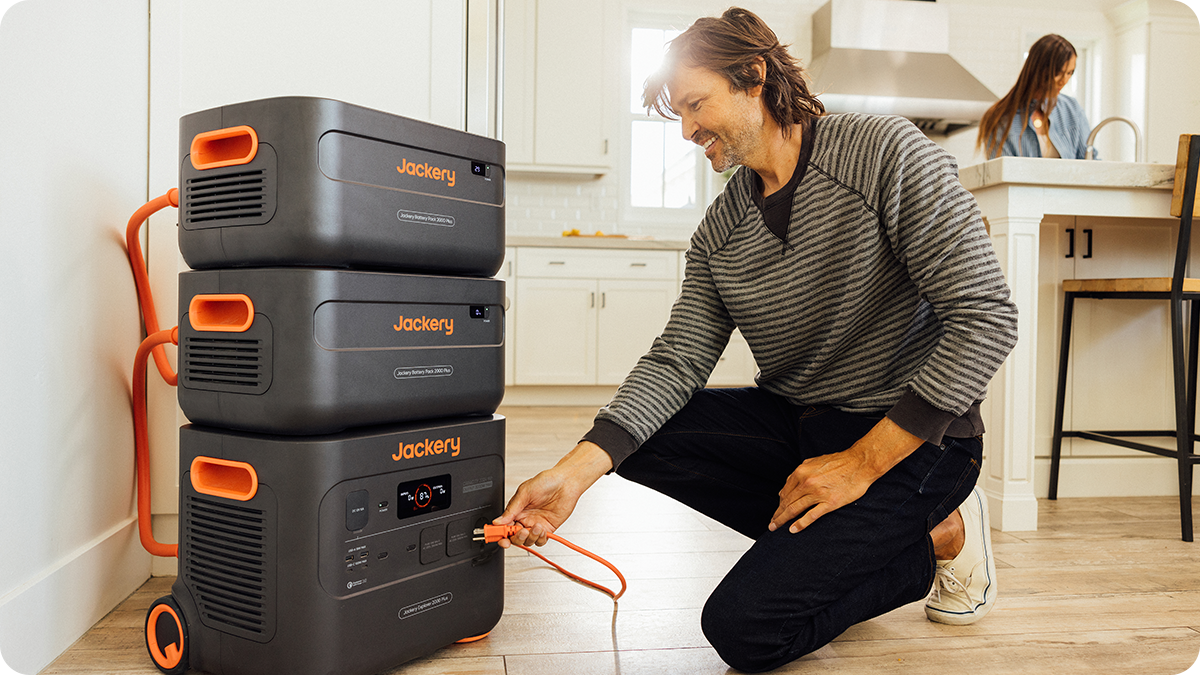What Are PV Modules?
Photovoltaic (PV) modules, commonly known as solar panels, convert sunlight into electricity. Most modules consist of silicon-based cells that generate direct current (DC) power when exposed to light. These modules are the foundation of solar energy systems, enabling clean, renewable power generation.
PV panels generally fall into two categories based on their build: rigid and flexible. Let's take a closer look.
What Are Rigid Solar Panels?
Rigid solar panels, also called traditional panels, feature monocrystalline or polycrystalline cells encased in tempered glass and supported by an aluminum frame. This sturdy structure enhances the panel's durability and efficiency, making it ideal for long-term installations.
Rigid panels are often mounted on rooftops but can also be used with ground or rack systems, offering flexible installation options without requiring roof drilling.
What Are Flexible Solar Panels?
As the name implies, flexible solar panels are lightweight and bendable. Made with thin-film technologies like amorphous silicon or CIGS (Copper Indium Gallium Selenide), these panels can conform to curved or irregular surfaces.
Weighing between 4 and 10 pounds and about 1 inch thick, they can bend up to 30 degrees. This makes them perfect for boats, campervans, trailers, or temporary setups where rigid panels aren't practical.
Installation is easy—simply apply adhesive or velcro to attach the panels to the desired surface.
Advantages and Disadvantages of Rigid PV Modules
The varying weather conditions across Europe, especially in countries like Germany, require solar modules that are not only functional but also durable and dependable. Let’s explore the strengths and drawbacks of rigid PV modules to determine whether this type of solar panel is suitable for your specific needs.
1. Advantages of Rigid PV Modules
Higher Efficiency
Rigid PV modules, built with crystalline silicon solar cells, offer significantly higher efficiency when it comes to converting sunlight into electricity compared to flexible panels. This advantage is particularly valuable during harsh winters in northern and central Europe, where sunlight hours can be extremely limited. Additionally, the ability to adjust the tilt angle of rigid panels improves sun exposure and optimizes energy production, even under cloudy or challenging weather conditions.
Long Lifespan and Durability
Rigid PV panels are designed with protective glass layers and solid aluminum frames that safeguard the silicon cells from extreme environmental elements. This robust construction helps prevent damage, scratches, or deterioration caused by weather conditions, ensuring the panels can withstand strong winds, heavy rain, and snowfall.
Lower Maintenance Costs
Thanks to their sturdy mounting systems, rigid PV modules remain securely in place, reducing the chances of dislodging or structural damage — especially relevant in coastal or high-altitude regions of Europe where strong winds are more frequent. This level of durability not only enhances safety but also lowers ongoing maintenance costs, as repairs and adjustments are rarely needed.
2. Disadvantages of Rigid PV Modules
Here are the key disadvantages to consider when choosing rigid PV panels:
Heavy Weight Requires Robust Mounting Infrastructure
A typical rigid 100-watt PV panel weighs around 14 pounds (approx. 6.35 kg), requiring a strong mounting system, which may increase overall installation costs. The weight also makes transportation more difficult, especially for outdoor applications like camping or wilderness hiking. Moreover, they may not be suitable for installation on older or structurally weak roofs.
Limited to Stationary Installations
Due to their weight and fixed structure, rigid PV panels are generally unsuitable for portable or temporary setups. Their design demands a permanent mounting solution, making them ideal for fixed rooftop installations or solar farms, but less practical for mobile use or structures that need relocation.
Susceptibility to Microcracks Over Time
Rigid panels can develop microcracks over time due to material stress, temperature fluctuations, or environmental conditions. These small cracks, although initially invisible, can gradually reduce the panel’s overall efficiency. However, this issue can be mitigated through careful handling during installation and routine maintenance to extend the panel's lifespan.
3. Common Application Scenarios
Residential and Commercial Rooftops
Rigid solar modules are ideal for both residential and commercial rooftop installations. Compared to flexible modules, they provide unmatched reliability, energy output, and structural integrity. Their solid build makes them a preferred choice for households and businesses looking to invest in long-term sustainable energy solutions.
Large-Scale Solar Farms
Rigid PV panels are also widely used in commercial solar parks. Their efficiency, durability, and cost-effectiveness make them well-suited for large-scale projects, where consistent long-term performance with minimal maintenance is essential.
Ground-Mounted Solar Systems
Rigid PV panels perform exceptionally well in ground-mounted solar setups. These systems allow for optimized panel positioning to capture maximum sunlight and are engineered to withstand high winds and heavy snowfall — common environmental conditions in many European regions.

Advantages and Disadvantages of Flexible PV Modules
Flexible PV modules offer a versatile and innovative alternative to traditional rigid panels, making them particularly attractive in certain scenarios. These modules adapt to the country's diverse architectural styles and offer unique advantages in both urban and rural areas.
Advantages of Flexible PV Modules
Here are some notable advantages of flexible PV modules:
Lightweight and Easy to Install on Various Surfaces
As mentioned earlier, a standard 100W rigid PV module typically weighs around 14 pounds, while a flexible solar panel with the same power output weighs only about 4 to 5 pounds. This significantly simplifies handling and installation. This characteristic is especially advantageous for installing solar modules on irregular or structurally weak surfaces—common in historic buildings and older structures in cities like Berlin and Munich—where traditional rigid modules may pose installation challenges.
Portability – Ideal for Remote or Temporary Locations
These panels are ideal for use in remote areas or applications requiring mobility, such as in the picturesque rural regions of Germany. Their portability makes them an excellent choice for temporary setups at outdoor events, camping trips, or even for use on boats and trailers—suiting the adventurous lifestyle embraced by many Germans.
Aesthetic Integration into Buildings or Structures
Flexible PV panels can be seamlessly integrated into building designs, enhancing visual appeal without compromising energy efficiency. For example, they are commonly incorporated into balcony solar systems, promoting a harmonious fusion of balcony architecture and photovoltaic technology. This is particularly beneficial for modern architecture projects in Germany, where design and sustainability go hand in hand.
Disadvantages of Flexible PV Modules
Here are several drawbacks that should be carefully considered:
Lower Efficiency Compared to Rigid PV Modules
Due to their different designs and manufacturing methods, flexible solar modules typically have lower efficiency than rigid ones. This is largely because the materials used may not capture and convert sunlight as effectively as the crystalline silicon used in rigid panels. However, ongoing advancements aim to close the efficiency gap between the two technologies.
More Vulnerable to Harsh Environmental Conditions
Flexible modules are less durable since they lack thick glass covers and rigid frames. Their flexible laminate design makes them more susceptible to physical damage—especially under extreme weather conditions like heavy snowfall, strong winds, and hail, which are not uncommon in many parts of Germany.
More Frequent Replacement or Maintenance May Be Required
Because flexible modules are more vulnerable to weather and environmental factors, they may need more frequent maintenance or replacement to maintain optimal performance. Under normal usage conditions, flexible PV panels generally last 5 to 15 years, while rigid modules can last between 25 and 40 years.
Typical Use Scenarios
Camping or Remote Work Locations
Flexible PV modules are excellent for generating electricity in off-grid locations, meeting the needs of outdoor enthusiasts and workers in remote areas across Germany.
Their lightweight nature allows for easy transportation and installation, providing a reliable power source for activities like camping, hiking, or work assignments in remote zones.
Specialized Use in Vehicles or Boats
These panels are also well-suited for specialized applications in vehicles and boats, where their flexibility allows for installation on curved or mobile surfaces—conditions where rigid panels are less practical.
This adaptability makes them ideal for integrating sustainable energy solutions into RVs and marine vessels, supporting eco-friendly living and travel across Germany’s roads and waterways.
Balcony Solar Systems
Specifically designed for urban environments, balcony solar systems are perfect for German residents who want to benefit from solar energy without sacrificing space or aesthetics.
These panels can be easily mounted to balcony railings or walls, enabling city dwellers in places like Berlin and Munich to contribute to renewable energy generation while making optimal use of limited urban space.
Introducing Jackery’s Balcony Solar Power System
If you're concerned that limited space might prevent you from benefiting from solar energy, Jackery’s balcony PV system — the Jackery HomePower 2000 Ultra Balcony Power Station — offers a smart and space-efficient solution. It allows you to harness solar power effectively without compromising the aesthetics of your European apartment or home.
The Jackery 2000 Ultra is specifically designed for easy installation on balconies, making it a practical way to generate renewable energy in tight urban spaces. This system includes:
-
High-Efficiency Flexible PV Modules
With hybrid fast-charging technology, the entire system can reach 80% charge in just 52 minutes. Offering 2800 W of solar input, the Jackery HomePower 2000 Ultra can generate up to 3360 kWh per year — saving you as much as €19,560 over 15 years. -
Compact, All-in-One Design
The integrated design simplifies installation and minimizes space usage. With versatile and bendable panels, this balcony PV system can also be deployed in gardens, garages, rooftops, and other compact outdoor spaces. -
User-Friendly, Drill-Free Setup
Installation requires no drilling and can be completed without professional help in just 5 minutes, making it highly accessible to a wide range of users — even those new to solar systems.
By integrating the Jackery HomePower Balcony System into your home, you can enjoy the benefits of clean, renewable energy without the need for major modifications to your living space.
Conclusion
Choosing between rigid and flexible PV panels depends on your needs and environment. Rigid panels offer top efficiency and durability, ideal for permanent setups. Flexible panels bring portability and easy installation, perfect for mobile and space-limited scenarios.
Jackery’s balcony solar system shows how flexible PV modules can unlock solar potential in urban areas. By understanding the strengths and limitations of each type, you can build a solar solution that fits your lifestyle and maximizes clean energy output.
For more insights and EU-ready products, visit our website and explore how Jackery helps you go solar—anytime, anywhere.
Reference: Solar Reviews (2024), "Understanding the 100-watt solar panel kit and its uses." https://www.solarreviews.com/blog/100-watt-solar-panel (Accessed July 30, 2024)








